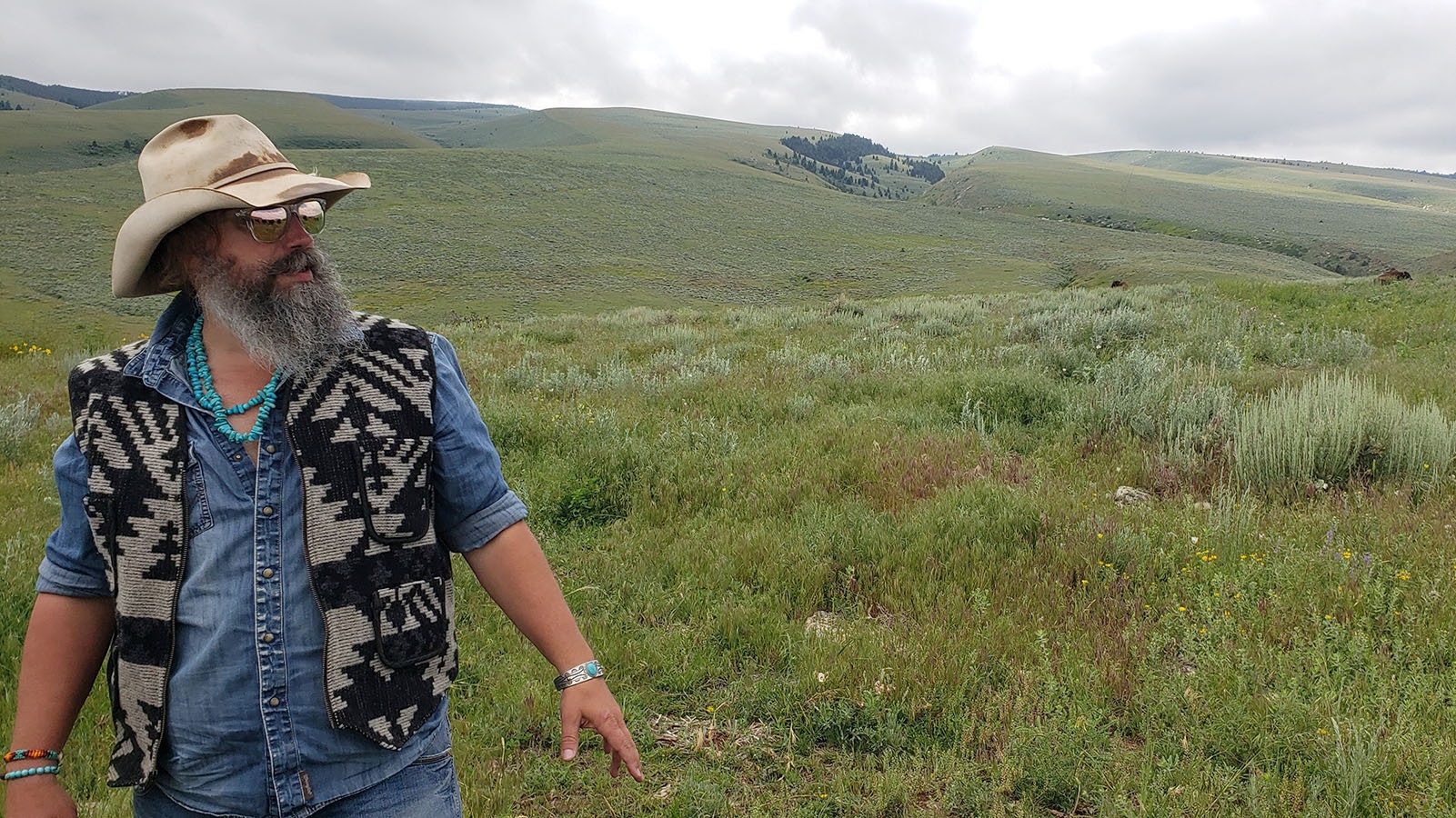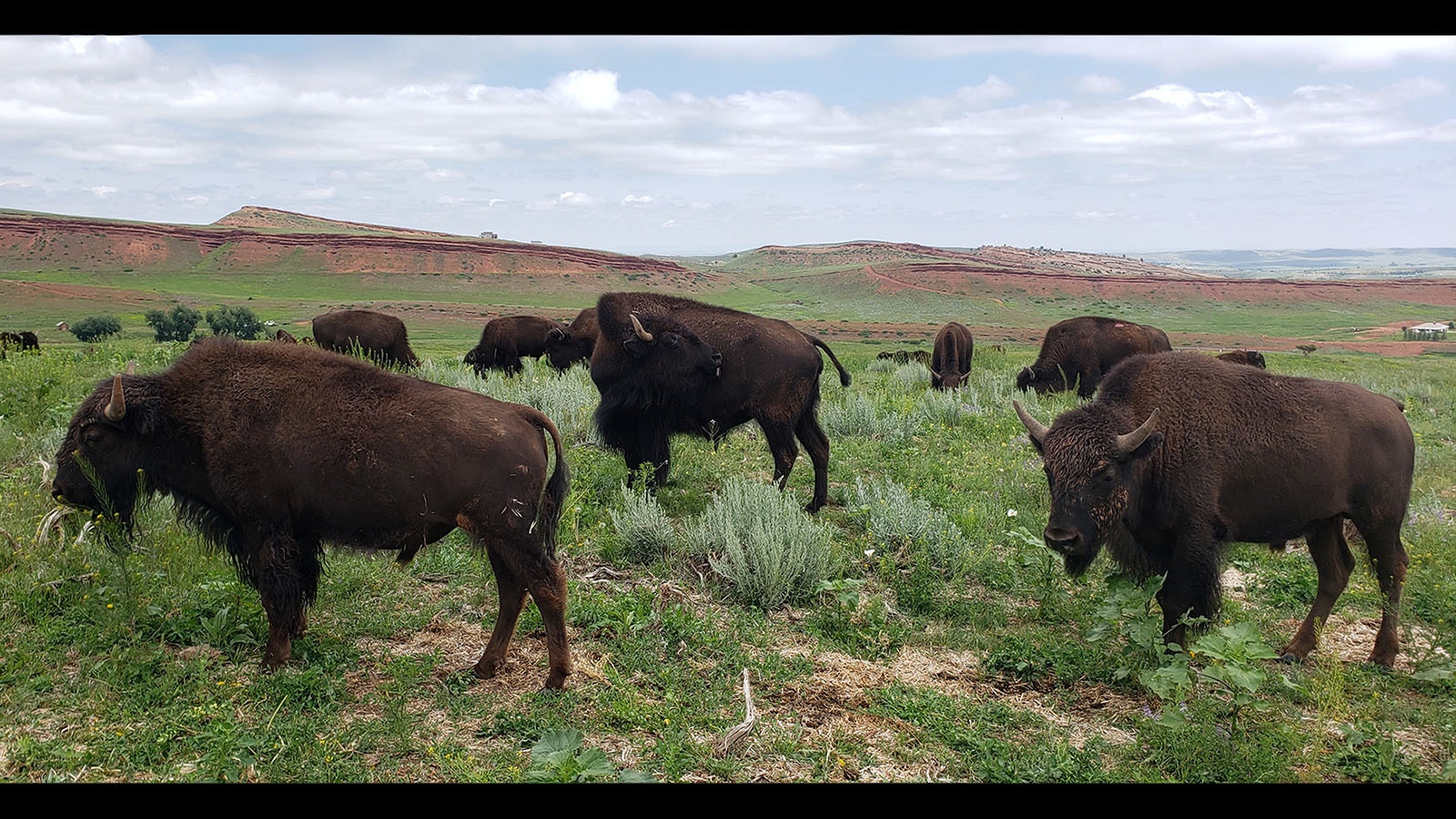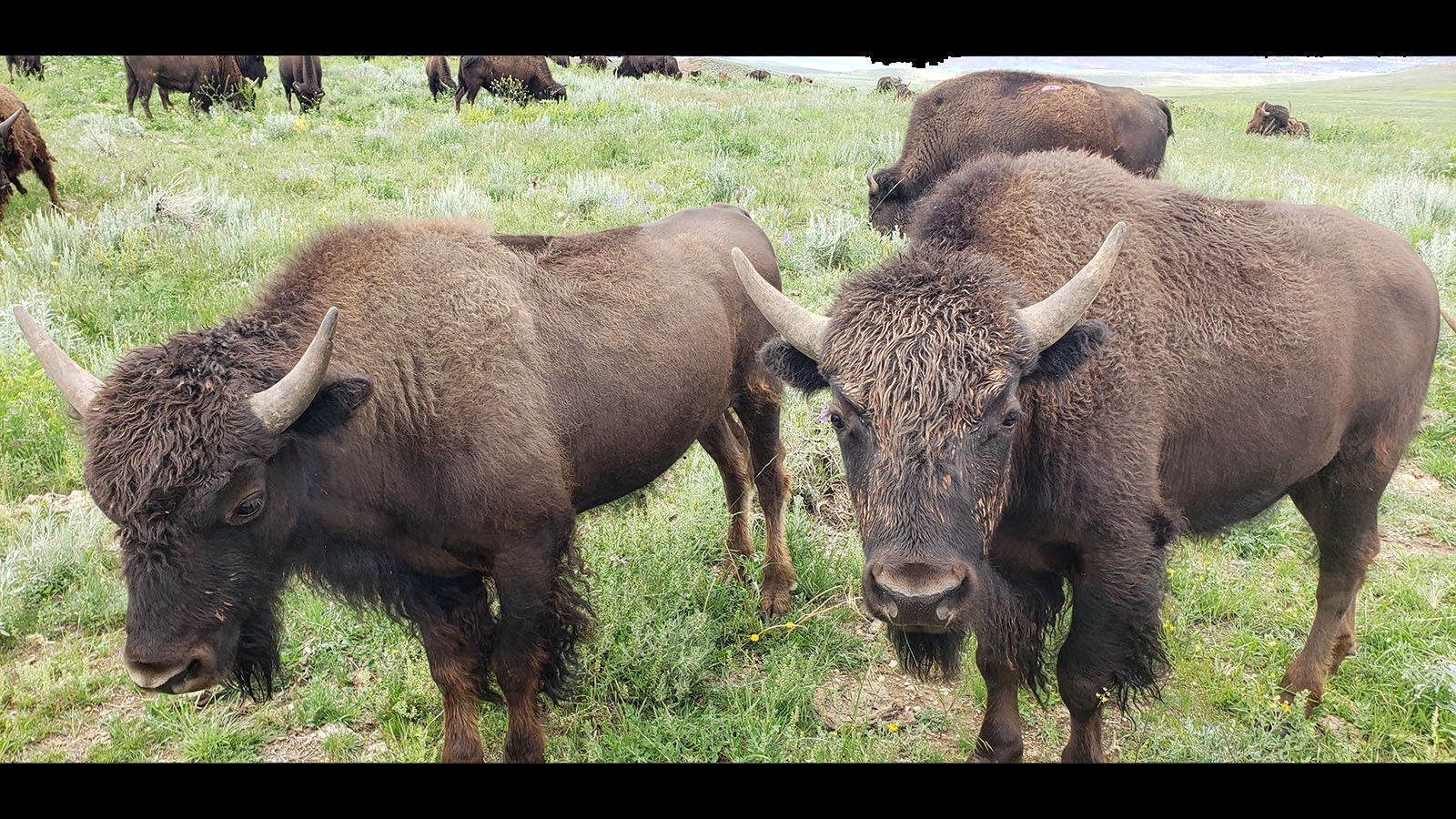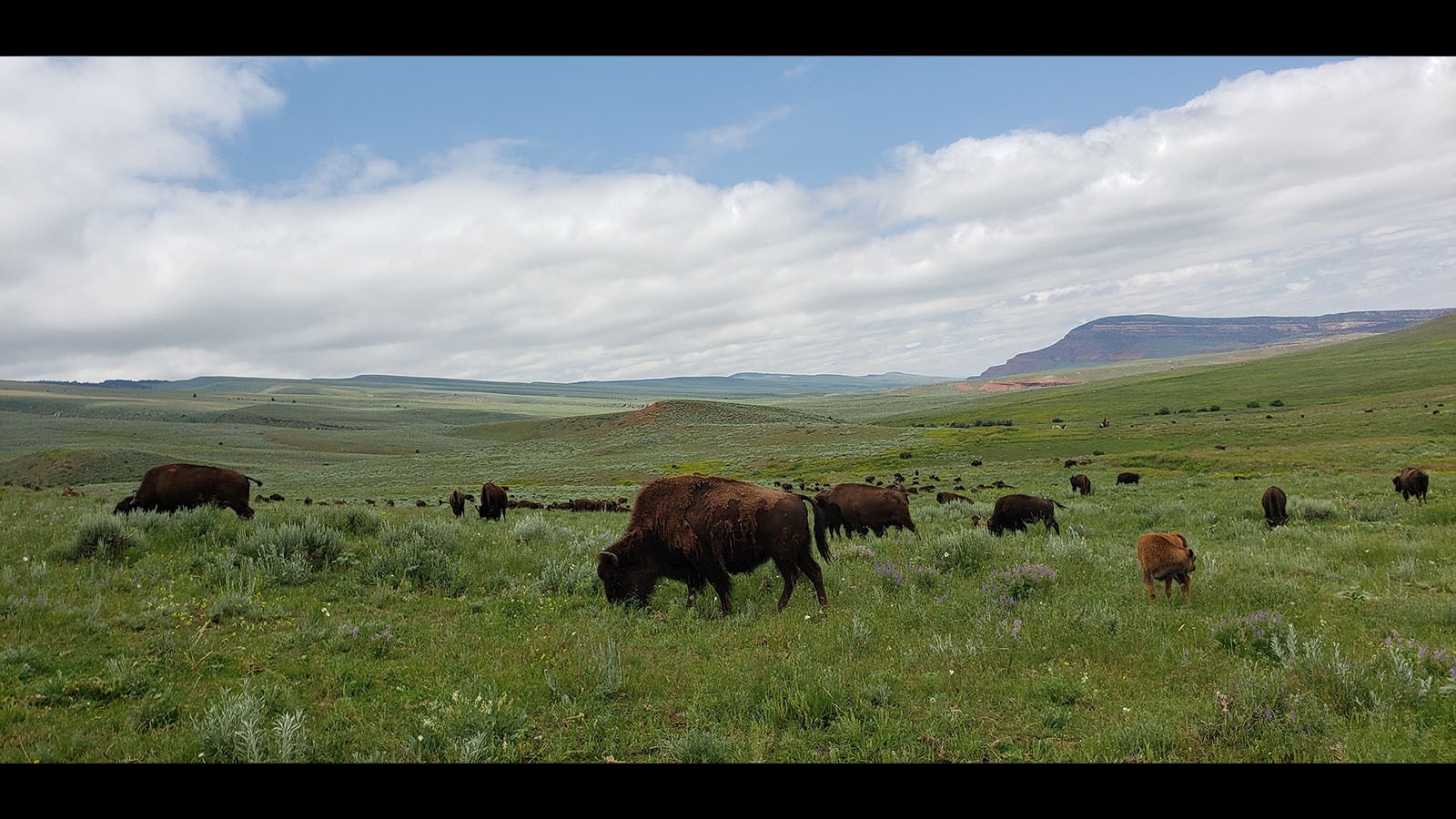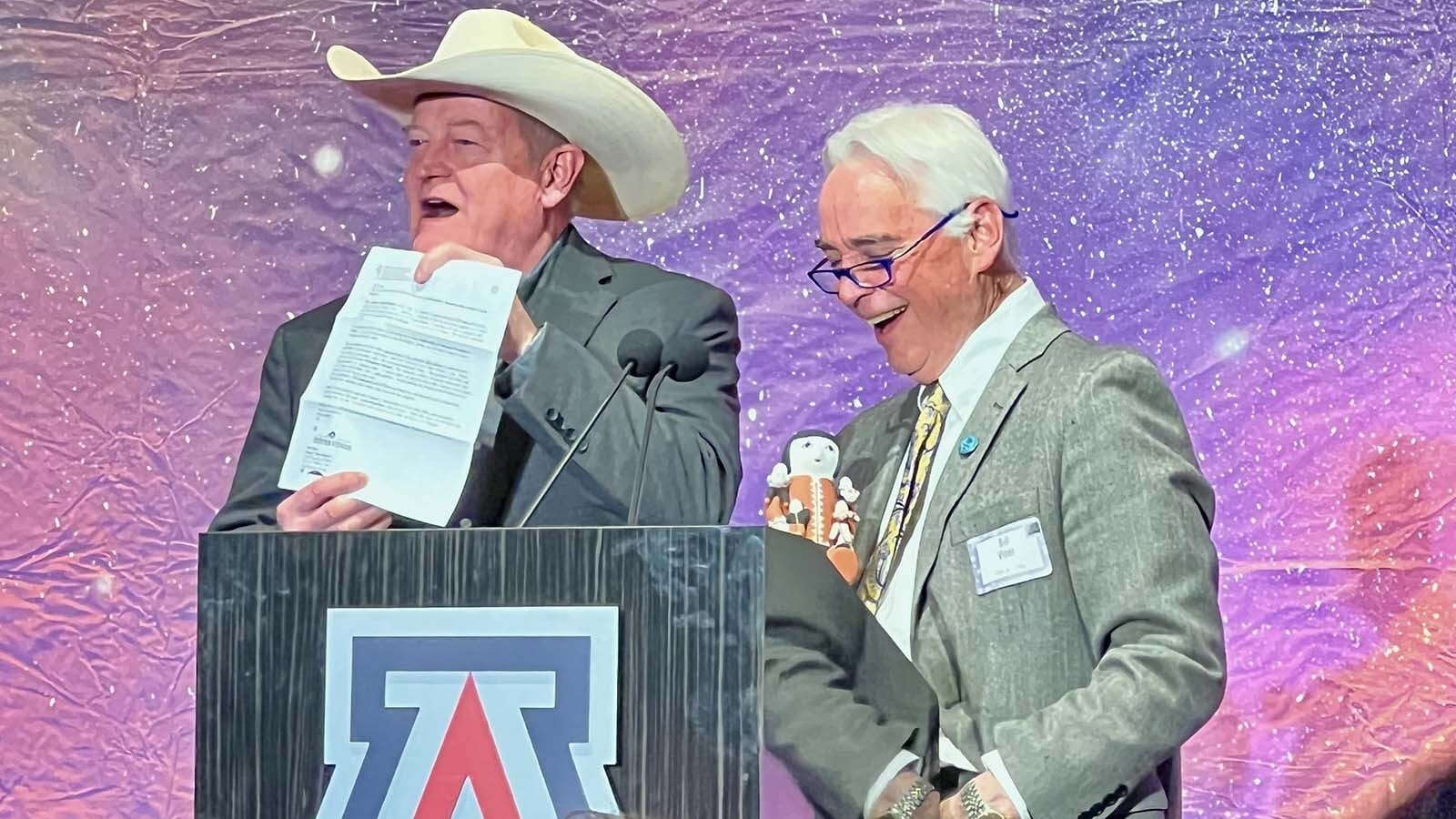FREMONT COUNTY — Growing up in Amish-Mennonite country in Georgia, Josh Kirk didn’t get Christmases, holidays, or even birthdays.
“None of that stuff,” he told Cowboy State Daily. “I wasn’t even allowed to wear short sleeves until I moved out.”
He also didn’t go to anything like a regular school. But he still got an education, one that he considers more valuable than anything taught in the modern world.
Kirk is a modern-day mountain man. He lives at the base of the Wind River Mountains in Fremont County, where he tends to a herd of 400 bison.
“I teach blacksmithing, beadwork, I do primitive brain tanning — the whole nine yards. I’m all over the board,” he said. “We had a smokehouse to smoke our own meat to preserve it. We didn’t have refrigerators and freezers and stuff growing up. We used a wood stove.”
Doctors and hospitals, too, were unheard of.
“I’ve only been to a doctor two times in my life,” Kirk said. “One time was when I was actually cleaning buffalo last year. That was the second time I’ve ever had stitches.”
The rest of the time? Kirk stitches himself up if he needs it.
The life he’s living isn’t part of a social media trend, designed to look good for a camera — though cameras have followed him around on the ranch as part of the History Channel’s "Mountain Men" series.
For Kirk, though, none of it is a made-for-TV movie. It’s just his life. His regular, every-day life.
Protecting The Herd
Day-to-day, Kirk is in a constant battle against the elements and every predator known to inhabit Wyoming’s Wind River range.
Mountain lions and coyotes are especially troublesome. Especially right now, with all the pretty little “red doggies” running around — red doggies being what Kirk calls his little baby bison calves.
Their bright red color stands out in the herd of mostly dark brown, almost black, bison, making them easy to spot from a distance.
Kirk doesn’t go looking for fights with predators. He respects them as natural inhabitants of his world.
But, at the same time, if they come looking for his calves, then they’ve picked a fight with him.
In that case, Kirk won’t back down. His herd is his livelihood, and it’s also part of his own dreams for the future.

Bison, or buffalo as Kirk refers to them, were once part of the native territory before Europeans came, Kirk said. They are ideally suited to the West, and to Wyoming in particular.
Bison have seven times the molar strength of cattle. That means they can eat things that a cow won’t touch.
And they can survive a deep winter snow, where cattle will struggle.
“We had 76 inches of snow the first month of winter,” Kirk said. “It was a really, really tough winter. You can’t have them (cattle) in five-, six-, eight-foot snow drifts. But bison, it doesn’t really affect them.”
Buffalo also create what are called “wallers,” which are actually good for the field.
“Buffalo can’t roll all the way over because they have those humps,” he said, pointing to a member of his herd of 400 bison grazing contentedly at the base of the hills, lush from recent rain. “When they get to rolling around, you know, to get mites or other bugs off them, that makes a little depression on the land.”
That depression will fill up with water, and later will be quite apparent on the land as an area with taller, greener grass than the rest of the field.
Cattle ranching, though, has made the country what it is, Kirk said, and so he’s not thinking about it like it’s a zero sum game. In fact, he helped some of his cattle-ranching neighbors to move their cattle this past winter.
There’s plenty of room for cattle ranches in the world, too, and they fill an essential role in the nation’s food supply, he said.
“Buffalo meat, bison meat, is a commodity that’s not a necessity like beef is, so (beef) is always going to be around,” he said. “I do prefer bison over cattle, myself though. I think they’re better on the land.”
Crafty And Curious
Ranching wild buffalo or bison is an experience unto itself. Kirk’s herd is directly descended from the bison in Yellowstone National Park, and he does not consider his bison the least bit domesticated. With their size, they’re not afraid to go wherever they please.
“They’re not going to respect (fences), they’re just going to go right through them,” Kirk said.
Electric fences aren’t much better, he added. There’s too much wool on their backs. They’re insulated from the shock.
Kirk is making fences built from repurposed pipes, which are much sturdier than what is typically used for cattle, but the best fence of all that he’s found is just good forage placed where he wants the bison to be.
Bison, Kirk said, are curious and crafty creatures. And they’re so large, with horns that can significantly wound anything attacking them, that they don’t have much fear of humans or anything else.
They’ll let Kirk walk among them, as long as he respects their boundaries.
Sometimes, that means a little more distance than others.
Funny Story
Kirk recalls a time when he was rebuilding a homestead cabin on the property, moving it where it used to be, and reattaching its old and ancient chimney.
He had a teepee set up nearby and, while he was working on the cabin, one of the brasher members of his herd decided to investigate.
Before too long, the bull had the entire teepee on his head, wearing it like some kind of weird headdress.
The bull took off running, with the teepee flying in the wind.
“He was shaking his head back and forth trying to get that off,” Kirk said, shaking his own head and laughing at the memory, noting it was probably the first time in a century or so that a bison had taken out a teepee.

Mountain Man Lesson For Today
The Wind River Range was home to one of the original mountain men rendezvous, where trappers gathered for a trading fair lasting several days.
Some historians believe the first of these were held in the Riverton, Wyoming area.
“Most of your free trappers would actually go to rendezvous, and they would have so much fun at rendezvous that they would spend all their money in the first two weeks,” Kirk said.
Outfits like the Hudson Bay Company would offer credit to trappers who had run out of money for whiskey and gambling.
“So, they’d take a whole winter’s worth of trapping, the whole season, and they’d lose it all,” Kirk said. “They would be in debt with Hudson Bay Company, and then Hudson Bay Company would hire them to go out and trap for them.”
Kirk sees a parallel in that tale for modern day societies, and it’s all part of why he has remained as he is, a modern-day mountain man, willing to teach others how the survival skills he knows, as well as pushing them to think about how they might apply in the modern world.
“We’re trading our freedoms for convenience and a house on Main Street,” he said. “And we’re losing the skills that have gotten us to this point.”
Sharing what he knows about living off the land with others is something he believes will help keep a candle lit for future generations.
“Being able to keep that candle lit for me is euphoric,” he said. “It’s passing down a skill set that, you know, we are losing. They’re gone, blowing away like a weed in the wind, a dandelion in the wind, and they are disappearing because of conveniences.”
Kirk has enjoyed being part of the Mountain Men series on History Channel, but told Cowboy State Daily he plans to opt out of the next season. He wants to focus on a new show that will involve apprenticing people to learn the skills he knows.
“I’m negotiating with four different networks right now,” he said, looking out over the herd of 400 bison under his care. “I haven’t signed a contract yet because I’m waiting. I believe in being patient.”
Renée Jean can be reached at renee@cowboystatedaily.com.

